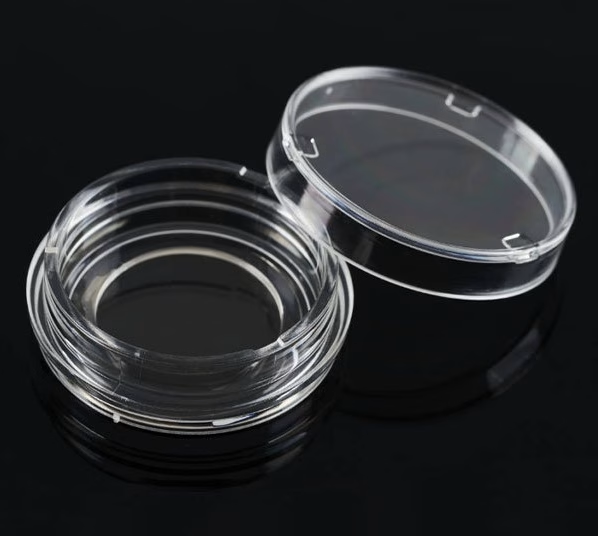Glass Bottom Dish
- 35mm Glass Bottom Dish
- Well Diameter: 15mm/20mm
- TC Treated, Sterile
Please Contact for Price
- Satisfaction Guaranteed
- Superior Quality
- Custom Solutions
- Comprehensive Support
- Secure Payment Options
Description
Glass Bottom Dish
Description
A glass bottom dish is a type of laboratory or scientific dish that has a transparent glass bottom. It is typically used in microscopy and cell culture applications. The glass bottom allows for high-resolution imaging and observation of cells or specimens from the bottom, which is especially useful for studying adherent cells or organisms.
The dish bottom is made of clear, optically transparent borosilicate glass, which provides excellent clarity and minimal distortion. The glass bottom is typically a thin, flat surface that allows light to pass through, enabling microscopic examination of the sample.
In addition to microscopy, glass bottom dish can also be used for other applications, such as fluorescence imaging, confocal microscopy, and high-throughput screening. They are available in various sizes and formats to accommodate different experimental needs.
Advantages
- The glass bottom is made of imported borosilicate glass with a thickness of 0.16~0.19mm, which is ultra-flat and ensures the best flatness of the bottom, thus avoiding depolarization;
- It is bonded with medical-grade, non-toxic adhesive with high bonding strength to cells;
- Both the top cover and the bottom of the dish are designed with three slots and grooves respectively. By changing the slots, the gas exchange can be controlled to meet the diversity and convenience of experiments;
- In vitro, culture environment provides a clearer view for high-resolution microscopy.
Features and Uses of Glass Bottom Dish
- Transparent bottom: The glass bottom of the dish allows for direct observation of samples from underneath, providing a clear and unobstructed view. This feature is particularly useful for examining cells, tissues, or organisms using microscopy techniques.
- High optical clarity: Glass is known for its excellent optical properties, including high transparency and minimal light scattering. This feature ensures minimal distortion and maximum image quality when observing samples through the glass bottom.
- Biocompatibility: Glass bottom dishes are typically made from materials that are compatible with cell cultures, ensuring that they do not interfere with the growth or behavior of cells. They are often made from borosilicate or soda-lime glass, which are inert and non-toxic to cells.
Additional Features
- Sterility: Glass bottom dishes can be sterilized using various methods such as autoclaving, making them suitable for aseptic cell culture applications. Sterility is crucial to prevent contamination and maintain the integrity of experimental results.
- Flat and optically polished surface: The glass bottom is usually flat and optically polished to provide a smooth surface for optimal imaging. This ensures that the sample remains in focus and that there are no irregularities that could affect the quality of observations.
- Compatible with imaging systems: Designed to fit into various imaging systems, including microscopes and imaging plates. They often come in standard sizes, such as 35 mm or 50 mm diameter, to facilitate compatibility and ease of use.
- Versatility: Can be used for a wide range of applications, including live cell imaging, fluorescence microscopy, confocal microscopy, and high-resolution imaging. They are also compatible with various staining and labeling techniques commonly used in cell biology research.
- Reusability: Can be washed, sterilized, and reused multiple times, reducing waste and cost in the long run.
Overall, glass bottom dishes provide a valuable tool for researchers to visualize and study samples in a controlled environment, making them an essential component in many biological and biomedical research laboratories.






Reviews
There are no reviews yet.